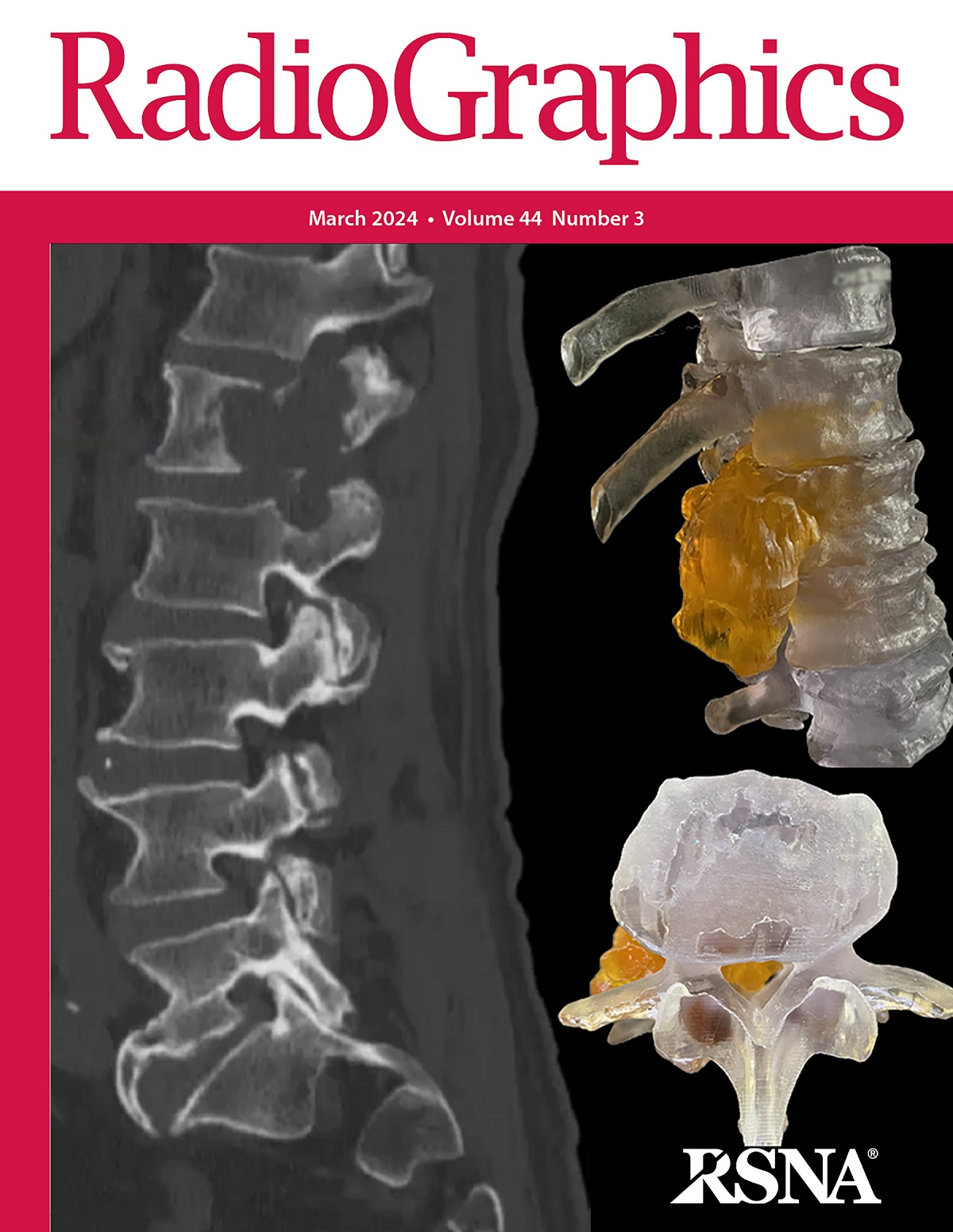求助PDF
{"title":"上尿路上皮癌的成像。","authors":"Hirotsugu Nakai, Hiroaki Takahashi, Clinton V Wellnitz, Melissa L Stanton, Naoki Takahashi, Akira Kawashima","doi":"10.1148/rg.240056","DOIUrl":null,"url":null,"abstract":"<p><p>Upper tract urothelial carcinoma (UTUC) originates in the renal pelvis or ureters and typically affects elderly patients, with its incidence increasing over the past few decades. UTUC is a distinct clinical entity with more aggressive clinical behavior than that of lower tract urothelial carcinoma. Due to the significant challenge of acquiring an adequate tissue sample for biopsy, comprehensive risk stratification is required for treatment planning, including radical nephroureterectomy and kidney-sparing management. Imaging plays an important integrated role in risk assessment along with endoscopy and pathologic examination. Lifelong surveillance is required after treatment due to the high incidence of recurrent and metachronous tumors. Lynch syndrome is a frequently unrecognized genetic disorder associated with UTUC that warrants specific attention in patient management. UTUC may manifest with diverse imaging findings, including filling defects, wall thickening, and mass-forming lesions. CT urography is the preferred modality for diagnosis and staging or restaging of UTUC, with numerous technical variations. Efforts have been made to optimize image quality and radiation exposure. Due to its poor sensitivity for small lesions, use of MR urography is limited to special clinical scenarios (eg, when patients have contraindications to iodinated contrast agents). Fluorine 18 fluorodeoxyglucose PET helps to detect metastatic lesions. Image-guided biopsy may be considered for uncertain lesions. Radiologists need to be familiar with the imaging findings and their differential diagnoses. <sup>©</sup>RSNA, 2024 Supplemental material is available for this article.</p>","PeriodicalId":54512,"journal":{"name":"Radiographics","volume":"44 11","pages":"e240056"},"PeriodicalIF":5.2000,"publicationDate":"2024-11-01","publicationTypes":"Journal Article","fieldsOfStudy":null,"isOpenAccess":false,"openAccessPdf":"","citationCount":"0","resultStr":"{\"title\":\"Imaging of Upper Tract Urothelial Carcinoma.\",\"authors\":\"Hirotsugu Nakai, Hiroaki Takahashi, Clinton V Wellnitz, Melissa L Stanton, Naoki Takahashi, Akira Kawashima\",\"doi\":\"10.1148/rg.240056\",\"DOIUrl\":null,\"url\":null,\"abstract\":\"<p><p>Upper tract urothelial carcinoma (UTUC) originates in the renal pelvis or ureters and typically affects elderly patients, with its incidence increasing over the past few decades. UTUC is a distinct clinical entity with more aggressive clinical behavior than that of lower tract urothelial carcinoma. Due to the significant challenge of acquiring an adequate tissue sample for biopsy, comprehensive risk stratification is required for treatment planning, including radical nephroureterectomy and kidney-sparing management. Imaging plays an important integrated role in risk assessment along with endoscopy and pathologic examination. Lifelong surveillance is required after treatment due to the high incidence of recurrent and metachronous tumors. Lynch syndrome is a frequently unrecognized genetic disorder associated with UTUC that warrants specific attention in patient management. UTUC may manifest with diverse imaging findings, including filling defects, wall thickening, and mass-forming lesions. CT urography is the preferred modality for diagnosis and staging or restaging of UTUC, with numerous technical variations. Efforts have been made to optimize image quality and radiation exposure. Due to its poor sensitivity for small lesions, use of MR urography is limited to special clinical scenarios (eg, when patients have contraindications to iodinated contrast agents). Fluorine 18 fluorodeoxyglucose PET helps to detect metastatic lesions. Image-guided biopsy may be considered for uncertain lesions. Radiologists need to be familiar with the imaging findings and their differential diagnoses. <sup>©</sup>RSNA, 2024 Supplemental material is available for this article.</p>\",\"PeriodicalId\":54512,\"journal\":{\"name\":\"Radiographics\",\"volume\":\"44 11\",\"pages\":\"e240056\"},\"PeriodicalIF\":5.2000,\"publicationDate\":\"2024-11-01\",\"publicationTypes\":\"Journal Article\",\"fieldsOfStudy\":null,\"isOpenAccess\":false,\"openAccessPdf\":\"\",\"citationCount\":\"0\",\"resultStr\":null,\"platform\":\"Semanticscholar\",\"paperid\":null,\"PeriodicalName\":\"Radiographics\",\"FirstCategoryId\":\"3\",\"ListUrlMain\":\"https://doi.org/10.1148/rg.240056\",\"RegionNum\":1,\"RegionCategory\":\"医学\",\"ArticlePicture\":[],\"TitleCN\":null,\"AbstractTextCN\":null,\"PMCID\":null,\"EPubDate\":\"\",\"PubModel\":\"\",\"JCR\":\"Q1\",\"JCRName\":\"RADIOLOGY, NUCLEAR MEDICINE & MEDICAL IMAGING\",\"Score\":null,\"Total\":0}","platform":"Semanticscholar","paperid":null,"PeriodicalName":"Radiographics","FirstCategoryId":"3","ListUrlMain":"https://doi.org/10.1148/rg.240056","RegionNum":1,"RegionCategory":"医学","ArticlePicture":[],"TitleCN":null,"AbstractTextCN":null,"PMCID":null,"EPubDate":"","PubModel":"","JCR":"Q1","JCRName":"RADIOLOGY, NUCLEAR MEDICINE & MEDICAL IMAGING","Score":null,"Total":0}
引用次数: 0
引用
批量引用


